The – almost – victory of the German Luftwaffe over the US bombers of the 8th USAAF – the “Flying Fortresses”
Losses and challenges
After May 1943 American losses began to increase. There were now some 600 B-17 Fs in Britain, while the Luftwaffe had a combined total of only 1,360 fighter aircraft on all fronts at the beginning of 1943, and only 908 of these were fully operational. The 8th USAAF introduced a so-called blitz week, which resulted in the impressive loss of 128 of the Boeings—a loss rate of more than 20 %. Despite the haemorrhage even more ambitious plans were devised.
Ambitious plans despite bloodletting: the largest B-17 force in 1943
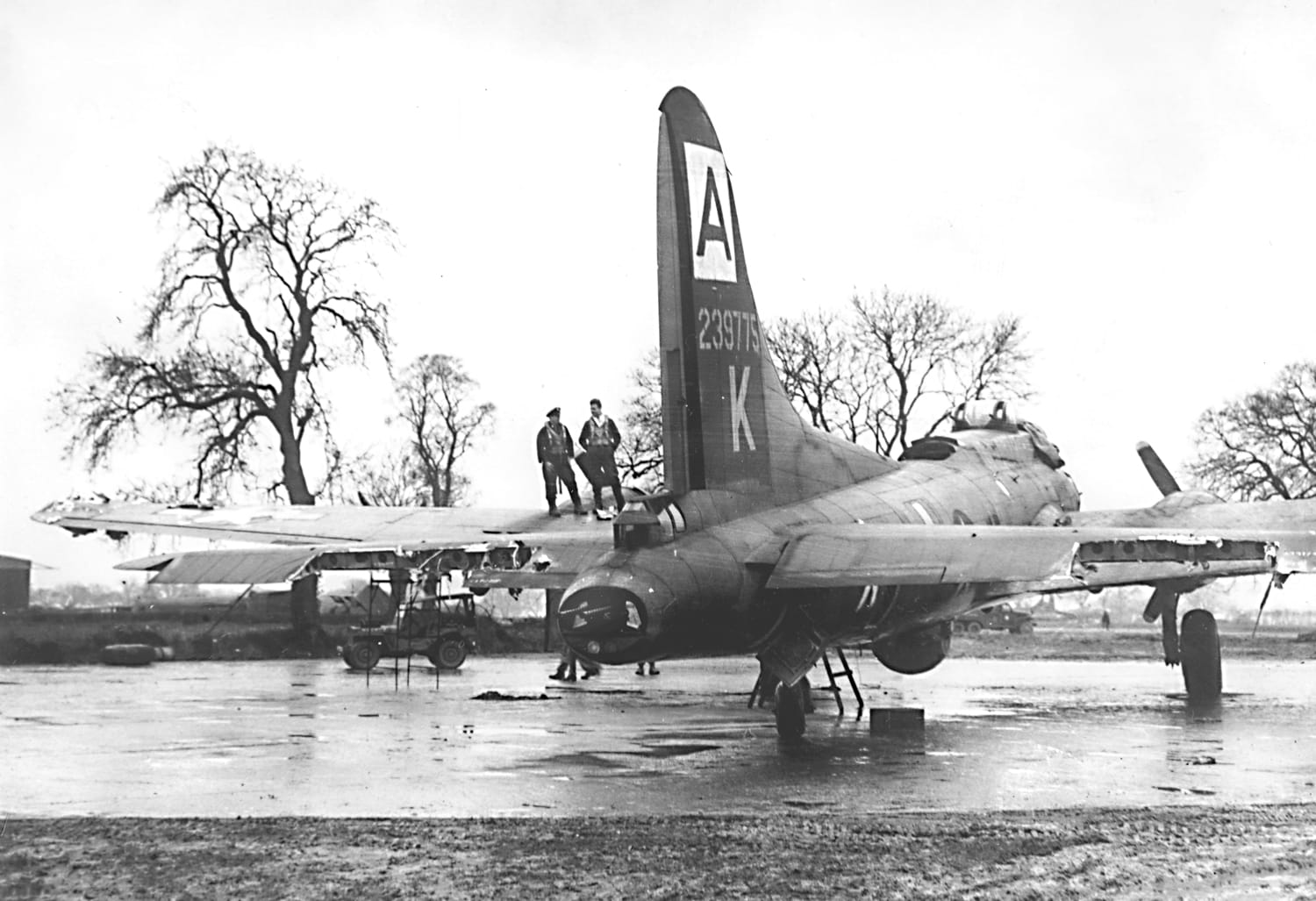
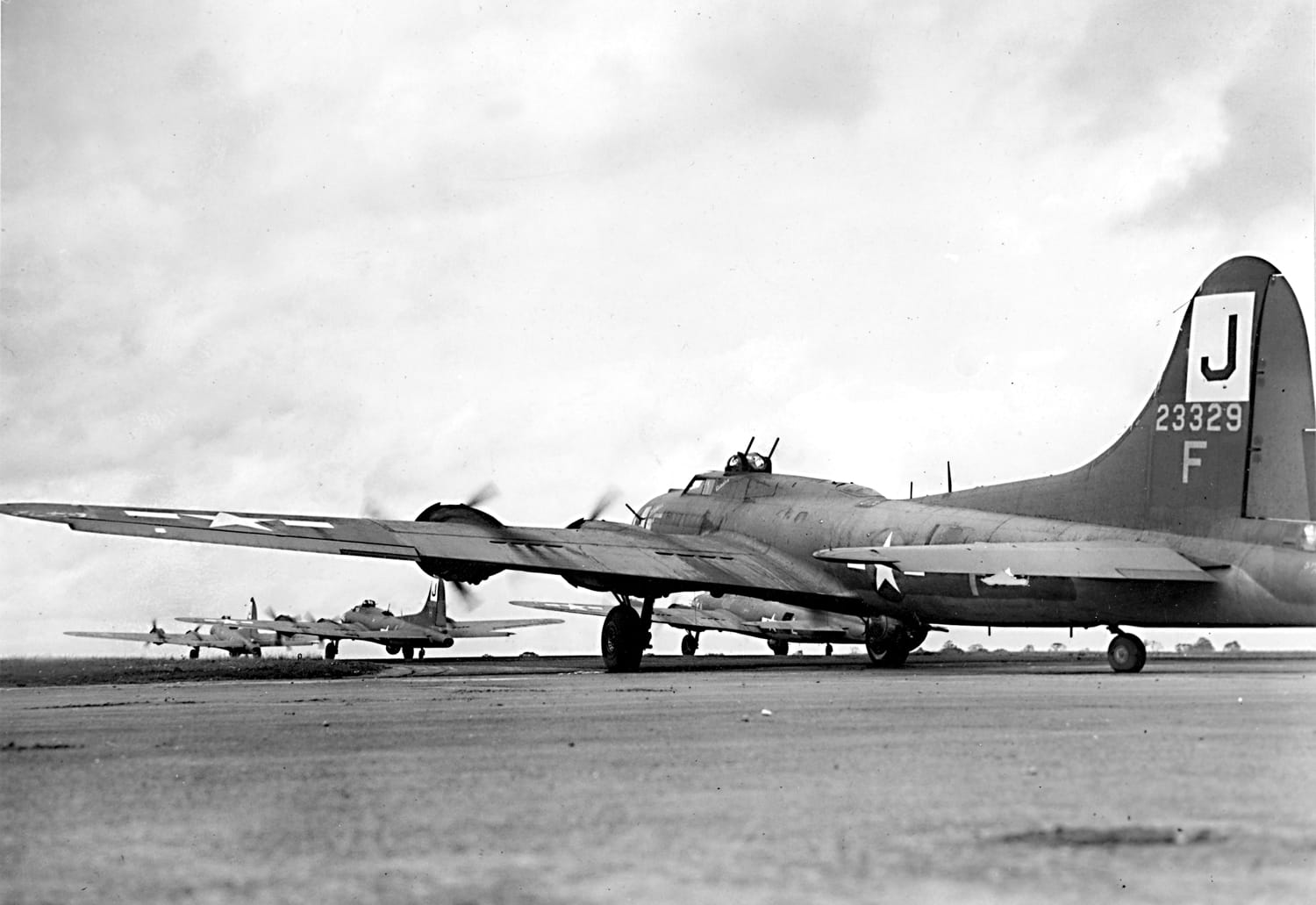
“It’s going to be all right! My God – you’re on our side!” This or something similar may well be the feeling on board the weaponised bombers.
On 17th August 1943 the largest B-17 force yet assembled (altogether 376 Boeing B-17 bombers in two attack formations) set out to bomb Schweinfurt and Regensburg. The first formation comprised 146 bombers and their target was the Messerschmitt factories in Regensburg. The Germans knew full well that the escort fighters could not travel the whole distance with the bombers, so they waited until they turned away.
Then they themselves turned to attack. From that point on the German fighter pilots would not allow the American crews a single moment’s respite. Whole lines of six fighter aircraft, wingtip-to-wingtip, blasted their way through the bomber formations. Others were attacking from the front, resembling, in the words of a navigator, “queuing up at feeding time!” 100th BG formed the formation’s “coffin corner“, flying in deep line astern, farthest to the rear. The “box“ was soon torn open and the fighters dived like wolves on the American bombers as they broke away. It took 90 minutes from the time the escorts were left behind for the four-engined bombers to reach their target, during which time they were continually harassed. The remaining badly damaged bombers escaped according to plan across the Alps to the allied airfields of North Africa.
The second attack on the ball-bearing factories in Schweinfurt had been intended to take place almost simultaneously. However, a sudden blanket of fog in England prevented the take-off of the bomber formations at the scheduled time. Thus, the German fighters had long since refuelled and rearmed as the 230 Flying Fortresses of the second formation crossed into the territory of the Reich. After the attack this armada did not continue to fly south but had to fight all the way back to Britain through enemy territory. The German fighters took off again, in some cases for the third time, in order once more to provide the Americans with a warm reception on their return flight. It was not until the American Thunderbolts raced to the rescue of their stricken comrades in the Boeings over Holland and Belgium that the Germans left the bombers alone.
Losses and balance sheet: the heavy costs of the attack
A total of 60 B-17s were shot down, a huge number which constituted a loss rate of 16 %. In addition, four more were so badly damaged that they were written off which raised the loss rate a further one percent. Furthermore 168 of the bombers were hit but were worth repairing after their return. Three of the P-47 fighter pilots who came to their comrades’ assistance lost their lives, making the total number of allied aircraft lost 67, including the three Thunderbolts. The human cost was terrible: 559 bomber crew members would never see Britain again and 21 were wounded.
The Germans lost 38 fighter aircraft and 15 pilots to the bombers’ gunners and the P-47 escort. Another 22 fighter aircraft were damaged and 16 pilots were put temporarily out of action through injury. It was testament to the bravery of the American bomber crews that despite running that hellish gauntlet they still inflicted substantial damage on the ground, hitting the target with conspicuous accuracy. Nevertheless, the damage was soon repaired, although the supply of ball-bearings was initially exhausted.
Tactical sophistication: Engaging the Thunderbolt escort fighters
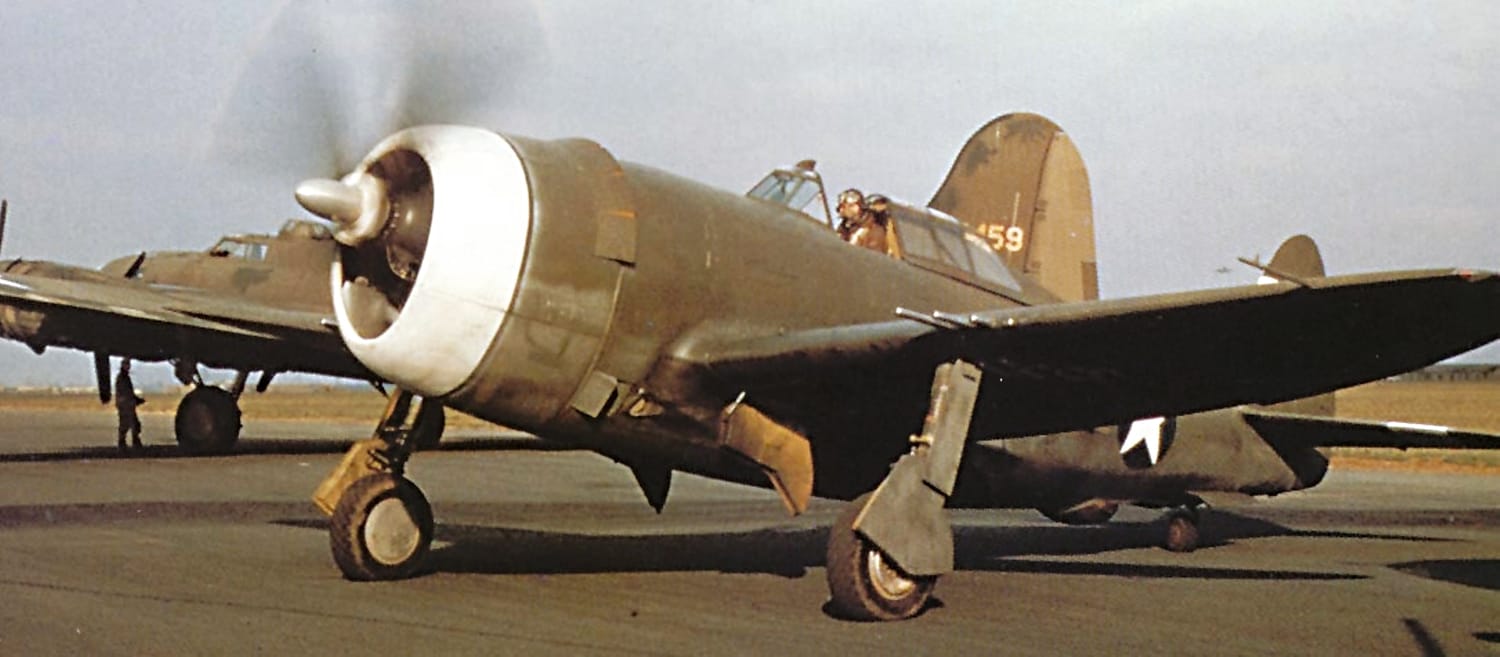
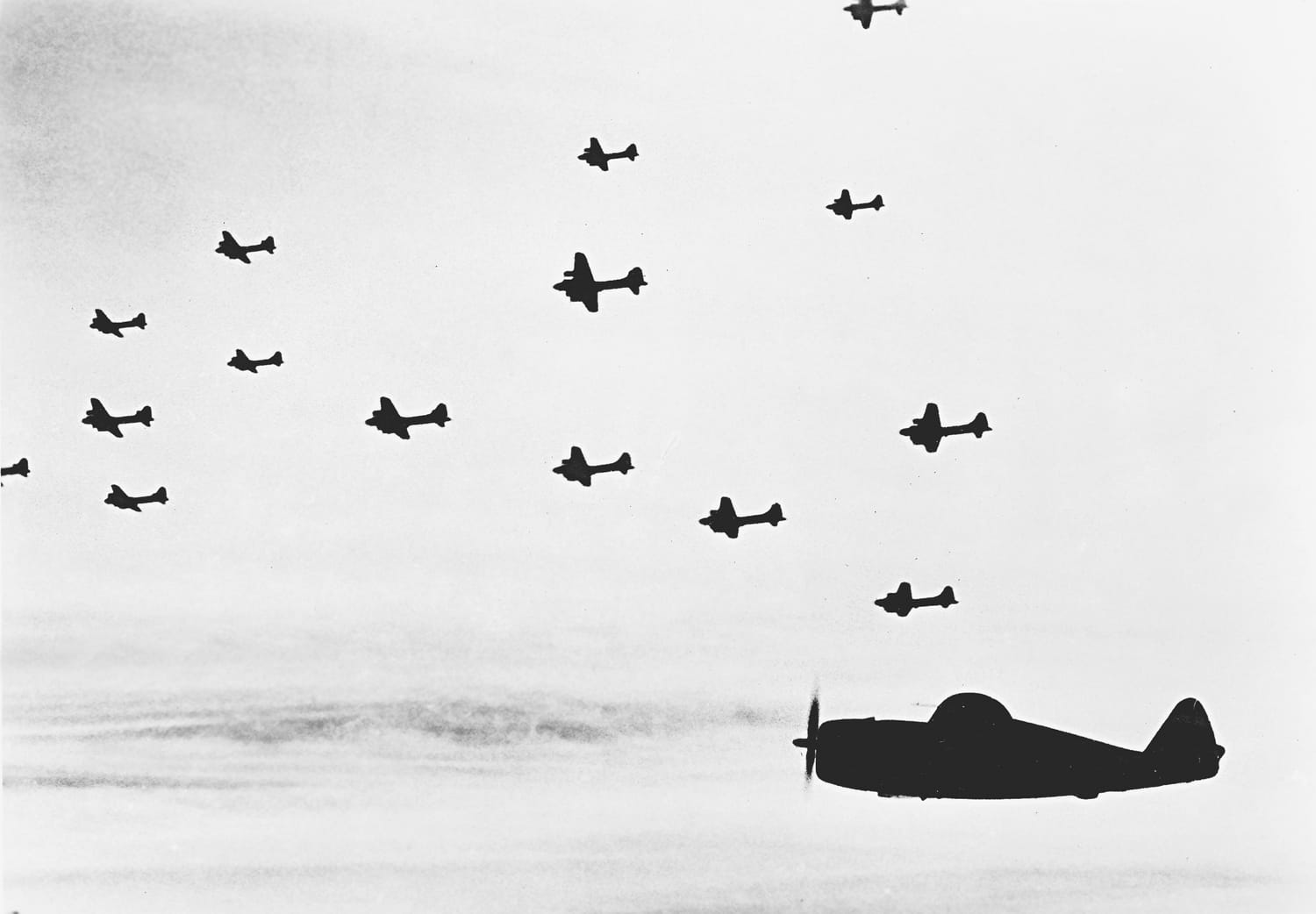
On 6th September 1943 338 bombers attacked a very heavily defended area—the idyllically situated southern German city of Stuttgart—as well as some smaller secondary targets. It was a fiasco, one of the worst the American Air Force would ever have to face. Some 45 B-17s did not return and another ten were write-offs on landing. 335 bomber crew members paid for the attack with the loss of their lives or—merely a few of them—were taken captive. 27 returned wounded and therefore had a narrow escape. In the successful German defensive operation, the Luftwaffe suffered the loss of seven aircraft destroyed, two fighter pilots killed and five wounded: from the German point of view it was a victory to the Luftwaffe.
On 14th October 1943 Schweinfurt was again the target. Now the German fighters attacked earlier, this time taking on the US Thunderbolt escort fighters. In so doing they forced them to jettison the drop tanks with which they were now equipped—but still did not give them sufficient range—and thus reduced their range even further. Then the German fighters withdrew and waited for the Thunderbolts’ premature departure. Now the haemorrhage of the 320 bombers began. When the battle was over 60 more of the B-17 bombers had been destroyed, seven returned so badly shot up they were scrapped. One of the P-47s was also shot down and another four were write-offs on landing, thus US losses totalled 72. A further 138 B-17 bombers and two P-47s were in need of repair. A total of 601 men of the USAAF were killed or missing in action and 40 were wounded. The Germans lost 34 of their fighter aircraft and 16 of their pilots died. In addition they also sustained damage to 29 aircraft and 13 wounded airmen.
Desperate missions: Unbearable B-17 losses force 8th USAAF to rethink
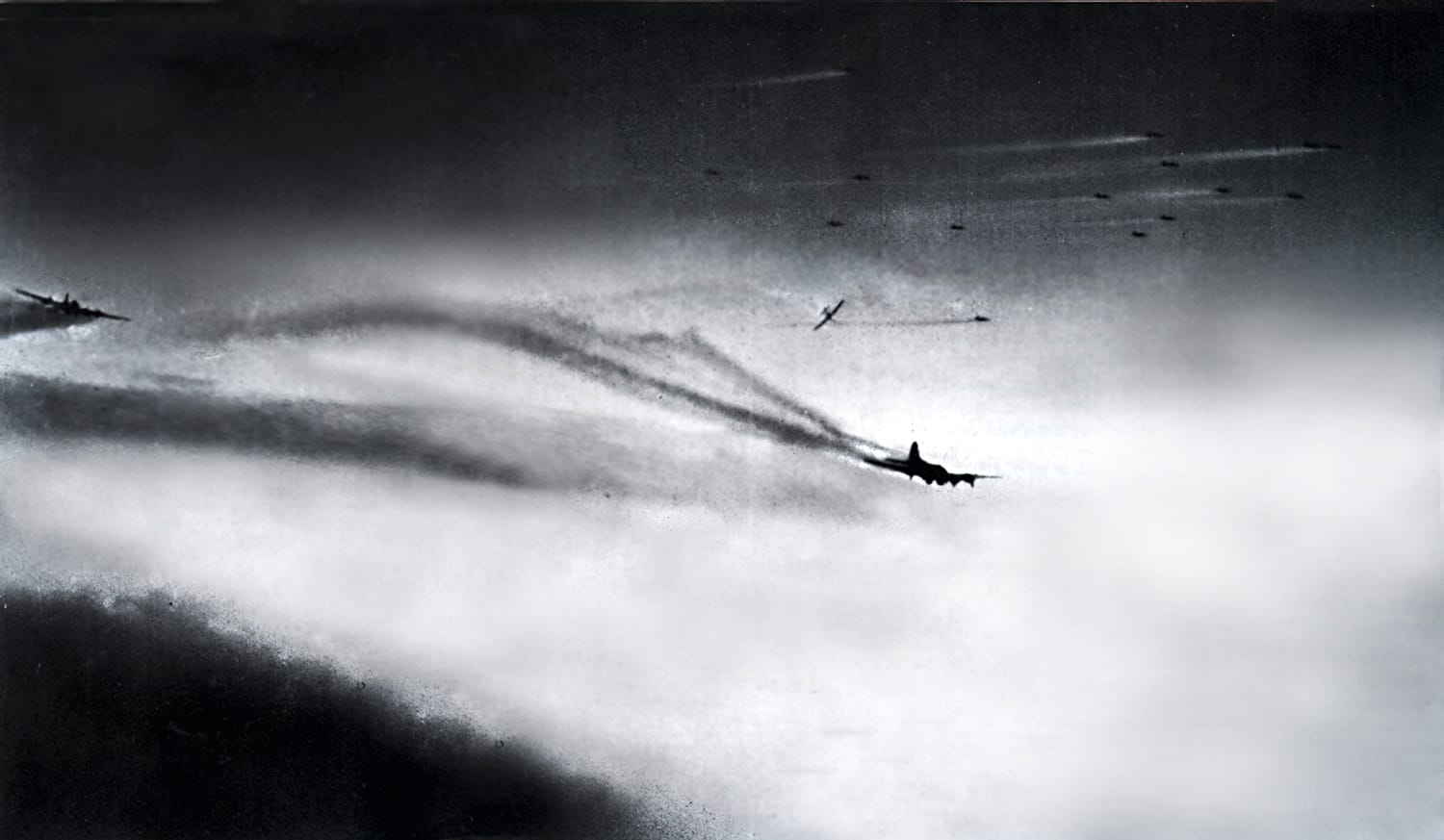
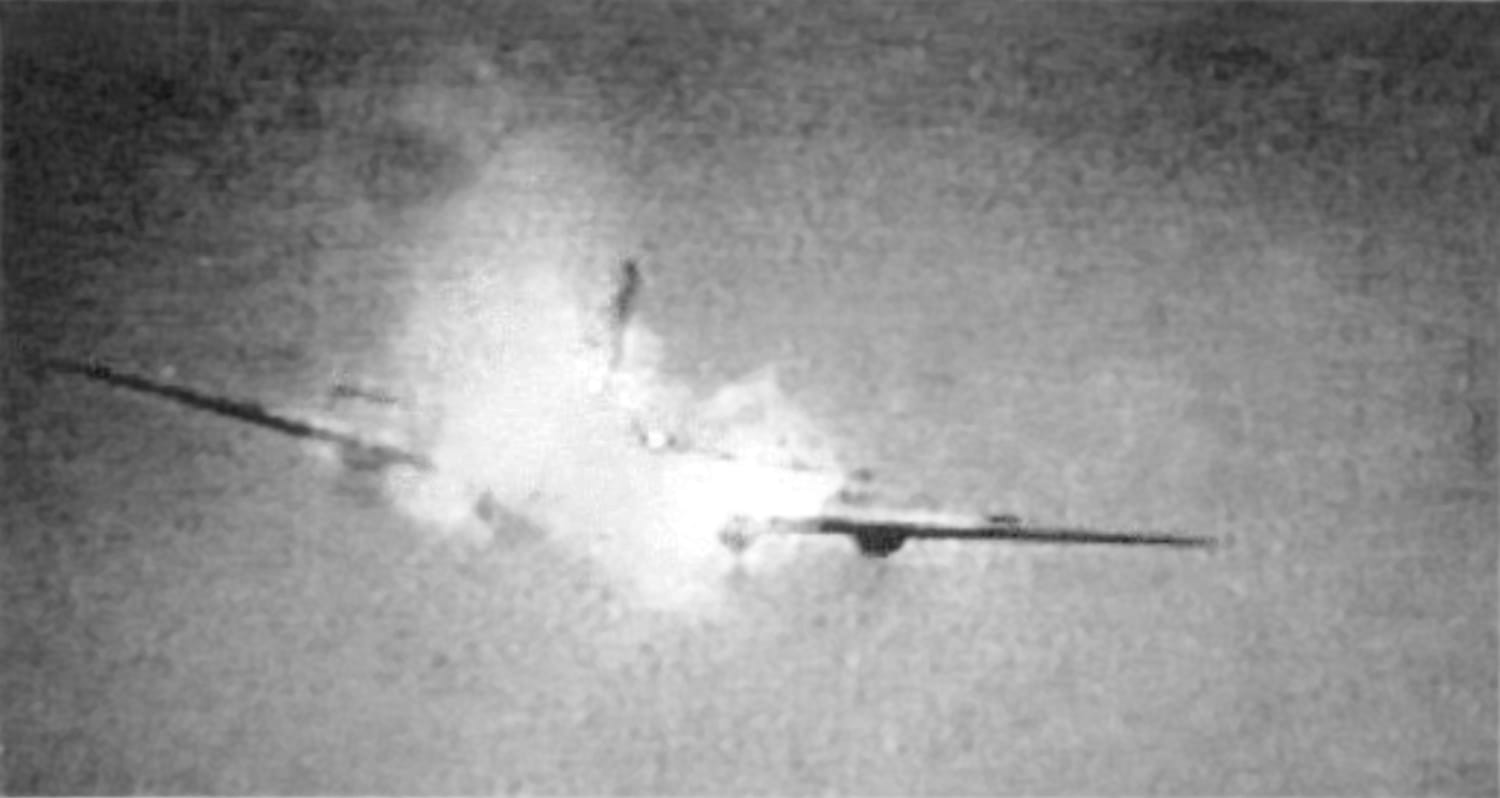
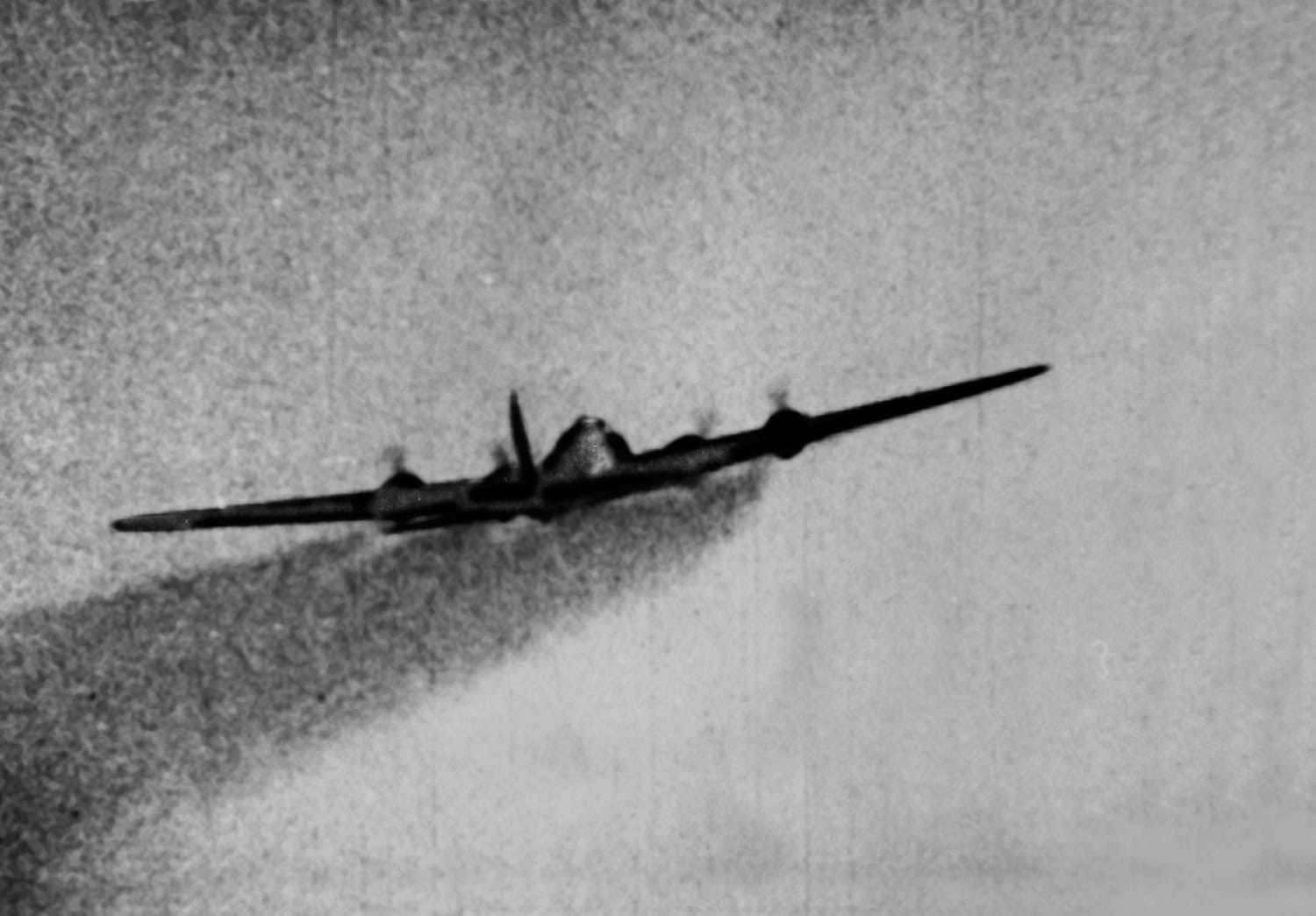
B-17 losses at this level were not sustainable and would in the long run mean the wholesale destruction of the 8th USAAF. The US crews felt they were flying suicide missions. Despite their obvious frustration the commanders of the 8th US Air Force were ultimately left with no alternative but to discontinue daylight operations into the heart of the German Reich.
It appeared as if the German fighters of Göring’s Luftwaffe had prevailed and decided victory in the daytime battle for German airspace in their favour.
The need for an American long-range fighter designed specifically to have sufficient range to penetrate deep into the heart of Germany, equipped moreover with improved drop tanks, had in the autumn of 1943 become a matter of life and death for the bomber crews of the Flying Fortresses.
Without their own US fighter aircraft to provide cover throughout entire operations US ambitions would be thwarted.
When these were actually available only months later, the Luftwaffe’s fate would be sealed.

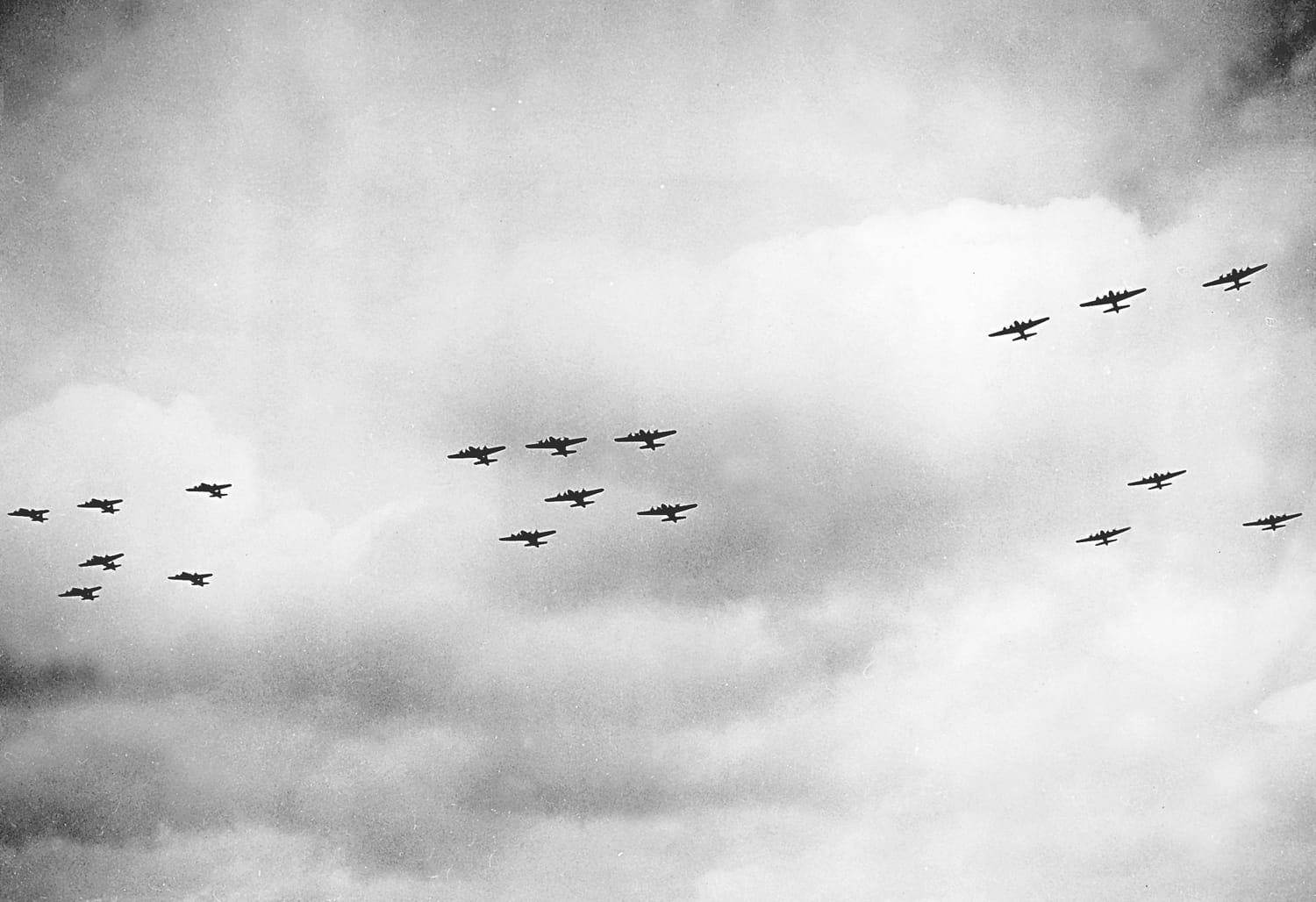


Ebenfalls interessant…

The final kill of the ace of aces, Erich Hartmann, the most successful fighter pilot of all time
Dangerous encounter in the airIn March 1945 a Russian bombing attack on Prague was reported. Hartmann took off with four Me 109s. A Russian formation…
Weiterlesen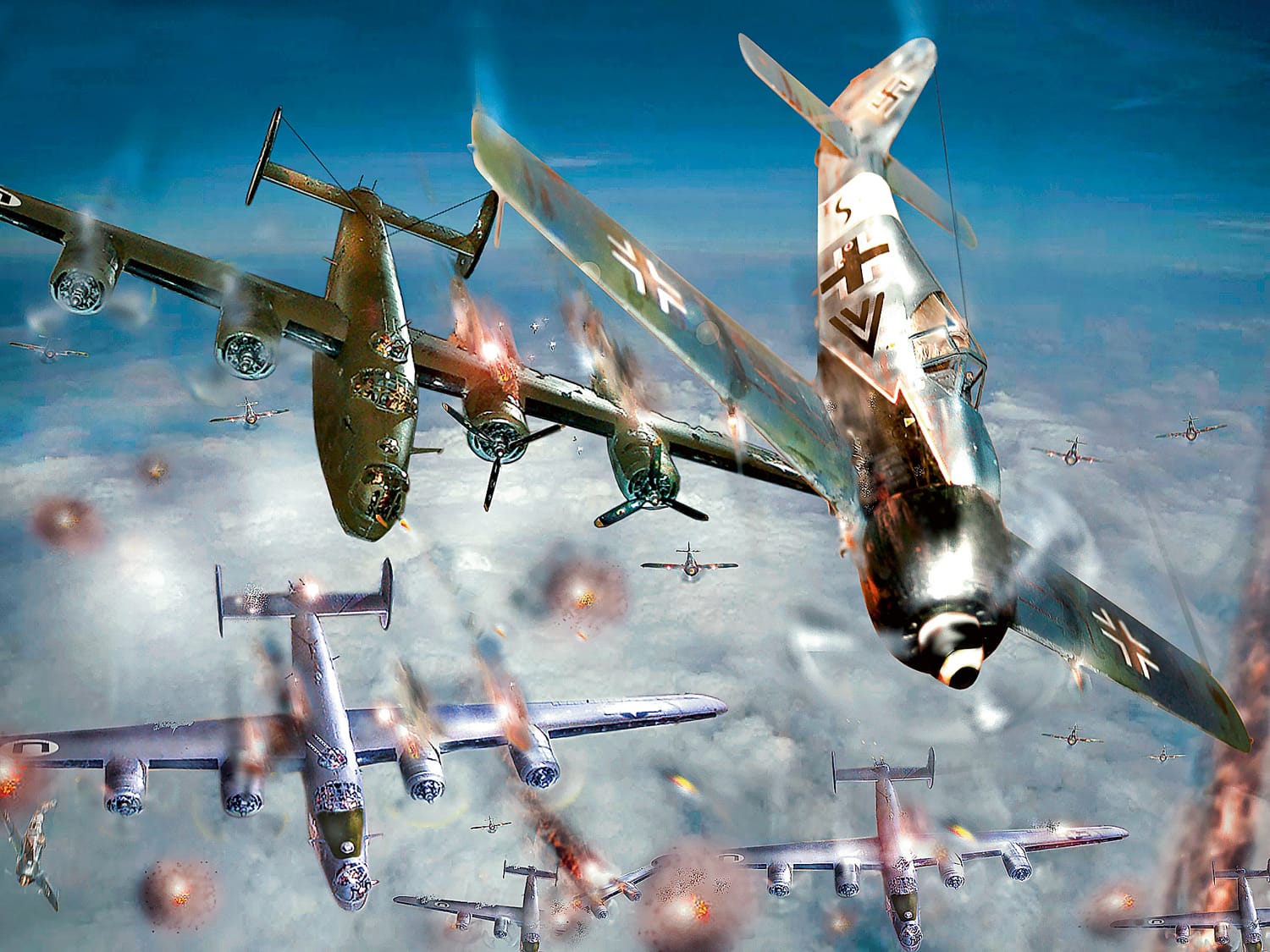
Sturmjäger – cuirassiers of the air
Air battle over Germany: the attack on hydrogenation plants and aircraft factoriesIn the early hours of the morning of 7th July 1944 756 B-17 Flying…
Weiterlesen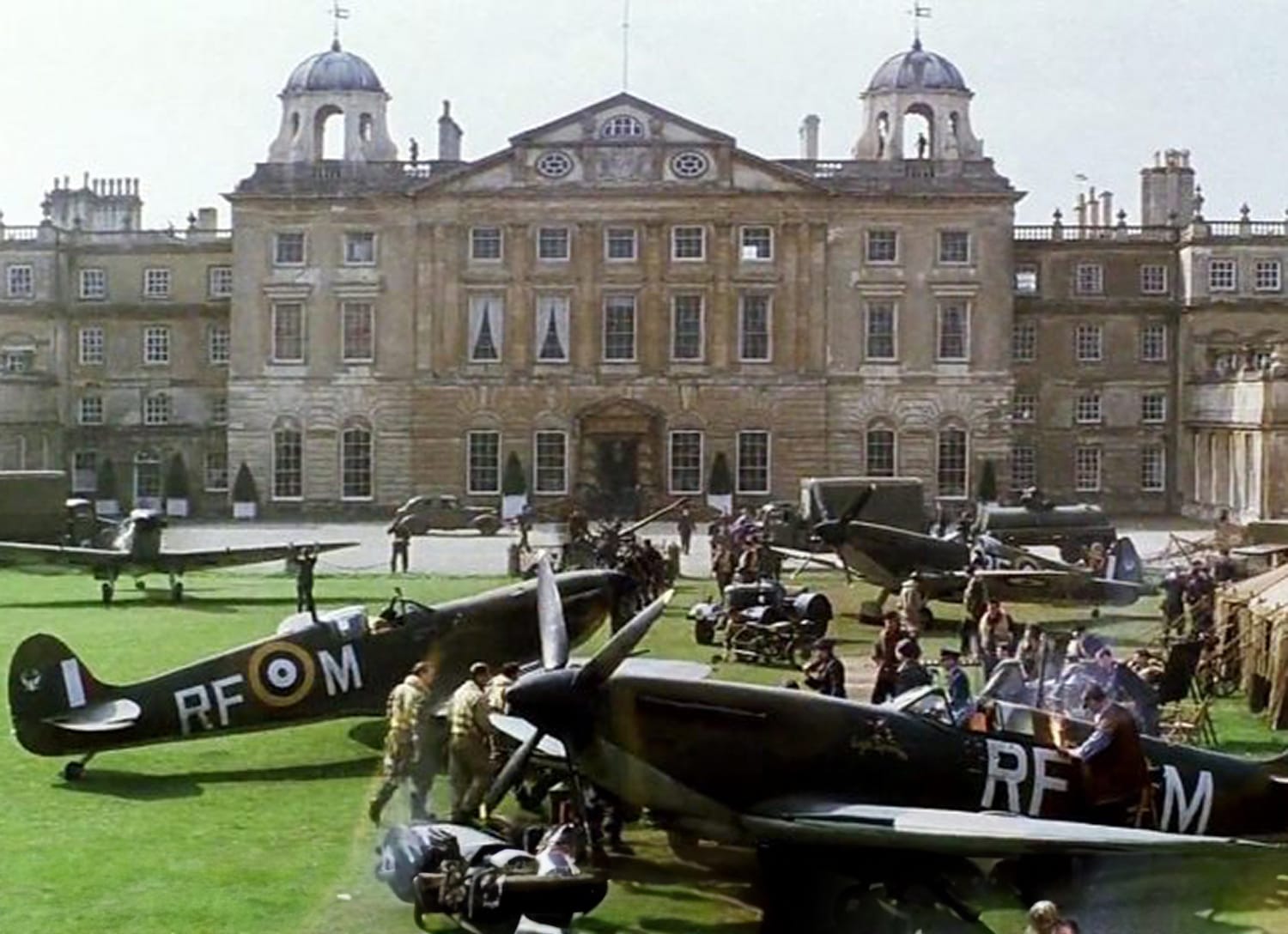
That’s how historic air battles get botched by Hollywood
Time and again the ignorance and nonchalance with which even highly renowned directors simply ignore historic details is fascinating. They do this in spite of…
Weiterlesen